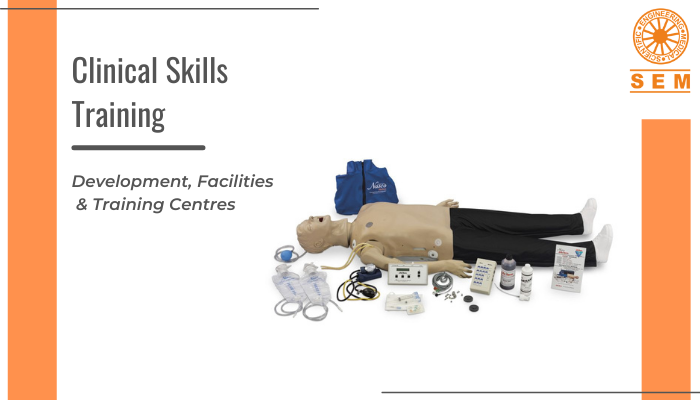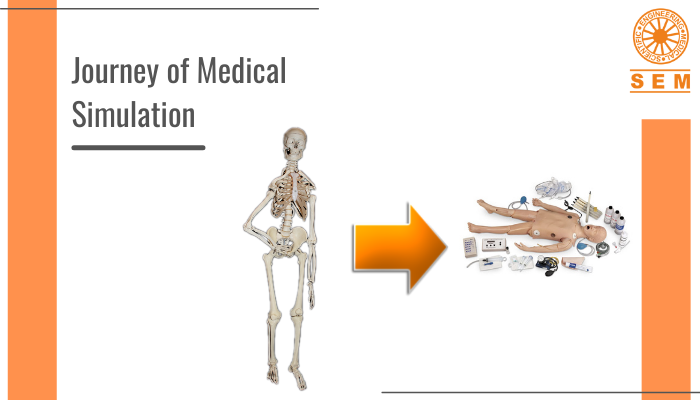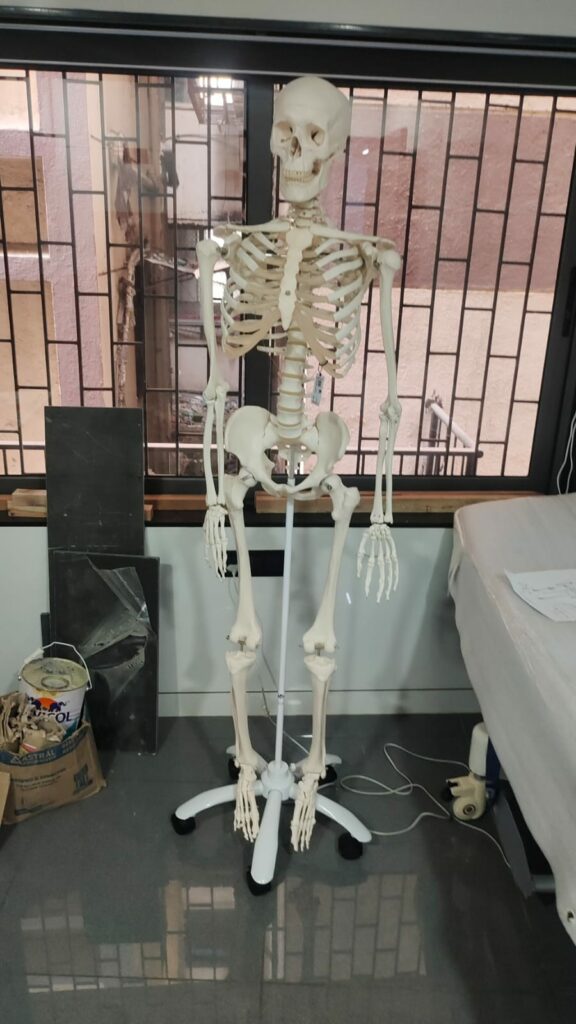Clinical Skills Training – Development, Facilities & Training Centres
Clinical Skills Training is specially designed for students to obtain and integrate general and special medical skills at the patient’s bedside. General history taking and examination procedures are being taught and practised through Clinical Skills Training. This occurs among the students first and then to the patients as well from the involved departments and hospitals. The goals of Clinical Skills Training are mentioned as scripts and guidelines.
Medical Simulation is a Disruptive Change in Medicine
It has changed the ancient and age old practice “One Doctor to One Apprentice”, a practice in “Residency Training” which was introduced by Dr Halsted at the turn of the 20th Century. This “Master-Apprentice Model” served well for the exigencies of that age and time. “The time now is to redesign for the requirements of the current era. However It should be noted that “disruptions” are the originators of paradigm shifts in human evolution, social developments and in scientific discoveries. Disruptions lead to paradigm transformational changes. Simulation has for the first time in the history of medicine, made it possible for the Apprentice to acquire, practice, and become proficient on demand, besides meeting the critical requirements of various Clinical Competencies says Dr. Stephen C. Schimpff in his book “The Future of Medicine-Megatrends in Healthcare”.
Why Simulation is becoming “Indispensable”
Simulation is now rapidly becoming an important and integral adjunct to Medical Education and training.
Let us look at the reasons why Simulation is becoming so indispensable for Healthcare Training.
- Learning any new skill means making mistakes
- Making mistakes is a normal part of the learning process. Learning medical procedures has traditionally meant making mistakes on real patients.
- Making mistakes on real patients can put the patients at serious risks sometimes life threatening, but
- Hands on “Experiential” learning is indispensable for Healthcare Professionals, be it at a basic nursing level, or undergraduate level or post graduate level or even at the practicing level
Development in Clinical Skills Training
The training of appropriate clinical skills is an essential element of healthcare education. It is seen that students are able to gain all the theoretical knowledge but somewhere lack the skills in practical and physical examination and thus, are unable to take simple and practical procedures. Hence, Clinical Skills Training makes a strong part of the core curriculum and this training programme ensures that all the students have the necessary learning opportunities and the appropriate assessment.
With frequent changes in the healthcare delivery process and pressure on clinical resources, the desired educational targets are not easily achieved with so many number of students. The hospital wards are not always the appropriate settings for the students to be introduced to clinical skills, practise them and master the essential technique. Thus, clinical laboratories were established to provide students the necessary environment in which they can get the training in clinical skills in a systematic manner using effective educational strategies and experiences.
Clinical Skills Competencies
Clinical skills competencies include:
- Communication and history-taking skills
- Professional attitudes and awareness of the ethical basis of healthcare
- Physical examination, procedural and clinical laboratory skills
- Diagnostic and therapeutic skills
- Resuscitation skills
- Critical thinking, reasoning and problem-solving skills
- Team-working, organisation and management skills
- Information and technology skills
Clinical Skills Facilities
To develop clinical skills competencies using manikins, fellow class members, simulated and real patients, clinical skills facilities have a space set aside for this purpose. The feedback is also provided through television monitoring or directly through simulated trained patients, their instructors or tutors. Because of these reasons, many medical institutions have now set up clinical skills training facilities or are in the process of doing so.
Targets According to Educational Needs
The clinical skills training is planned having one group in mind. It is usually set up in the context of a new undergraduate medical curriculum with the targeted users being medical students. The target users, however, can be broadened to involve other students from a wide variety of healthcare backgrounds and at various stages of their healthcare development.
Clinical Skills Training Centres
There are many financial, management and educational arrangements for clinical skills training where the multipurpose education remains ascertained. But to make students learn together in carefully selected, practically relevant, task-based scenarios, that prepares students from different professional backgrounds for later work practice as the members of the healthcare team, clinical skills training centres are made. They provide an ideal setting for the early development of such relationships.
Use of these clinical skills training centres by students at different phases of their educational spectrum (undergraduate or basic training, post graduate or vocational training, continuing professional development) emphasizes the importance of the continuous sequence of education. Thus, the making clinical skills training centre accessible by different groups of students allows the facilities to be consumed in a much proper way.
Different Approaches Through Studies
There are many approaches that focus on how to engage students in self-directed learning and peer learning activities to improve clinical skills training in undergraduate medical students. In the first study, the clinical skills training provided by student teachers and associate professors is compared. The results have shown the student teachers performing as good as or even better than associate professors when they are giving simple clinical skills training.
The second study examines how complex clinical skills, such as patient management skills, develop with increasing levels of competence. To reflect this change, the Reporter-Interpreter-Manager-Educator framework was used and explored. In the third study the effects of training in pairs (also known as dyad practice) were examined. This study showed that the students practicing in pairs significantly out-performed those training alone using RIME-based assessments and that dyad training significantly improved students’ confidence in managing future patient encounters. The final study examined students’ use of self-directed clinical encounter cards (CECs) based on the RIME framework.
Results from this study showed that self-directed CECs can have positive effects on participatory practice and clinical reasoning when implemented in a supporting environment but the chance of success depends on the context of use.
For Ideal Skills Lab Development Programme, contact us.



